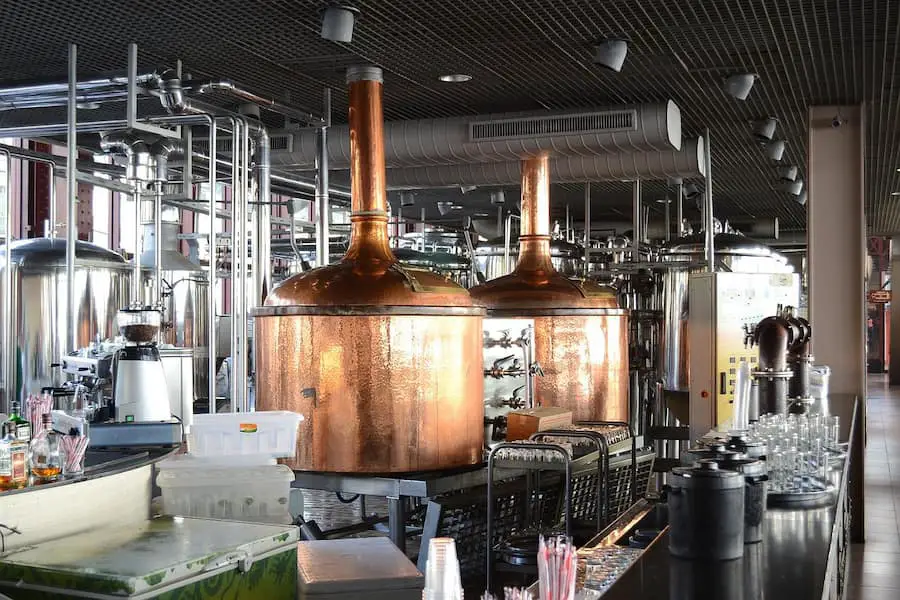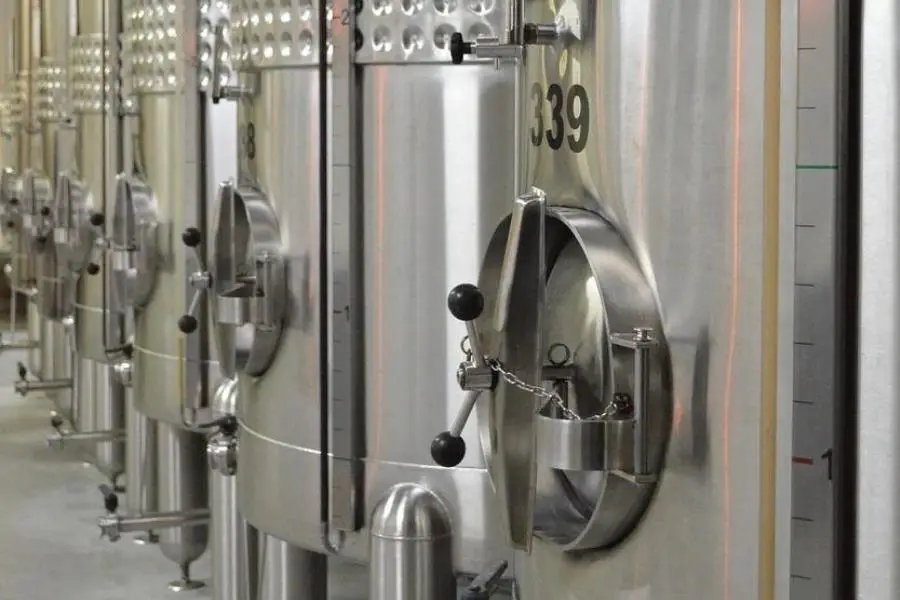If you buy something through a link in our posts, we may get a small share of the sale.
Fermentor vs Fermenter is two terms that are often used interchangeably in the food and brewing industry. However, these have very different similarities and differences that must be considered when discussing their use. You don’t want to mess up your brewing process by using the wrong terms!
Contents
Fermentor vs Fermenter
Brewing has come a long way since the early days of home brewing. Fermentation has been the key to making beer and wine for centuries, and the process has changed over time. The brewers are working round the clock to perfect their art and have access to some of the best fermentation equipment in the world.

For this reason, it is important to know the difference between a fermentor and a fermenter before starting your next batch of beer. I must also consider the similarities to know how they work interchangeably in the brewing industry. This way, you will have a clear understanding of the process and be able to make an informed decision about which type of fermentation vessel is right for your needs.
Most of the time, the fermentor and the fermenter are used in home brewing. In a commercial setting, there is often a separate vessel for each fermentation stage. However, in a home brewing setup, using a single vessel for both primary and secondary fermentation is common. This will save you money and space in your brewing area.
Fermentor
A fermentor is a vessel that controls the environment in which yeast ferments sugar into alcohol. It is the powerhouse of the beer-making process as it is where most of the fermentation occurs. The fermentor must be airtight to prevent oxygen from entering and ruining the batch. It is also where the yeast is added to the wort (unfermented beer).
The fermentor should be made of a material that is non-reactive and can withstand the high pressures produced during fermentation. Stainless steel is the most popular choice for fermentors as it is easy to clean and does not rust. Glass is another popular choice as it allows the brewer to see the fermentation process. The only problem with glass is that it can shatter if not treated carefully.
The fermentor should also be equipped with a way to release the pressure that builds up during fermentation. This can be done with a blow-off tube or an airlock. The blow-off tube is attached to the top of the fermentor and allows the CO2 to escape. The airlock is a device that fits onto the top of the fermentor and has a one-way valve that allows the CO2 to escape while preventing oxygen from entering.
Advantages
- The fermentor has an airlock that prevents oxygen from entering the vessel and ruining the batch.
- Many of these vessels are made of stainless steel, which is easy to clean and does not rust.
- The fermentor can be equipped with a blow-off tube to release the pressure that builds up during fermentation.
- The modern fermentors are equipped with a temperature controller to ensure that the yeast remains active during fermentation.
Disadvantages
- The fermentor is a closed vessel, meaning you can non see the fermentation process at once.
- The fermentor does not have a way to collect the yeast produced during fermentation.
- The fermentor must be cleaned and sanitized before each use to prevent contamination.

Fermenter
A fermenter can either be an ingredient that triggers fermentation or the vessel in which fermentation occurs. In the context of home brewing, a fermenter is usually the vessel in which fermentation occurs. The fermenter can either be yeast or bacteria. The most common type of fermentation is alcohol fermentation, which is caused by yeast.
In simple terms, it can be an enzyme or apparatus used to perform or facilitate fermentation. It causes the sugar in the wort to convert into alcohol and carbon dioxide. This process is also known as brewing. The fermenter can be anything from a simple carboy to a conical tank.
The fermenter should be made of a material that is non-reactive and can withstand the pressure exerted during fermentation. Glass, food-grade plastic, and stainless steel are all common materials used to make fermenters. Yeast, bacteria, and enzymes are all fermenters and are what cause fermentation to occur.
Advantages
- Fermenters can serve both the purpose of an ingredient and the vessel.
- It is made of non-reactive materials like glass, food-grade plastic, and stainless steel; hence can withstand the pressure of fermentation.
- Most have temperature control that helps maintain the yeast’s activity during fermentation.
- Most fermenters have a way to collect the yeast produced during fermentation.
Disadvantages
- The fermenter is a closed vessel, meaning that oxygen can enter the vessel and ruin the batch if not carefully monitored.
- The fermenter must be cleaned and sanitized before each batch to prevent contamination.
Comparison Between the Two
Now that I have looked at each type of vessel individually, let’s compare the two side by side and see what fits where and for what application. The following is a quick comparison of the two types of vessels:
Similarities
- Both are used to brew beer.
- Both have non-reactive materials like glass, food-grade plastic, and stainless steel.
- Both have a way of releasing the pressure that builds up during fermentation.
- You must clean and sanitize both before each batch to prevent contamination.
- Both have temperature controllers to ensure that the yeast remains active during fermentation.
- Both will produce yeast during fermentation.
Differences
- Fermenters can be used for other types of fermentation like kombucha or wine, while a fermentor is explicitly used for beer.
- A fermentor has an airlock to prevent oxygen from entering the vessel, while a fermenter does not.
- A fermentor does not have a way to collect the yeast produced during fermentation, while a fermenter does.
- A fermentor is a closed vessel, meaning you cannot see the fermentation process at once.

Major Distinguishing Factor
The major distinguishing factor between a fermentor and a fermenter is that a fermentor is an apparatus used to perform or facilitate fermentation. In contrast, a fermenter is an ingredient or a vessel that triggers fermentation.
In simple, the fermenter is a two-in-one that can either be the ingredient or the vessel, while the fermentor is only responsible for performing the fermentation. Another way to put it is that all fermenters are fermentors, and not all fermentors are fermenters.
When to Use a Fermentor
The best time to use a fermentor is when you are looking for a vessel to perform or facilitate fermentation. If you are looking for an apparatus to help ferment, then a fermentor is what you need.
When to Use a Fermenter
The best time to use a fermenter is when you need an ingredient or vessel to trigger fermentation. If you are looking for something that will help with the actual fermentation process, then a fermentor is not what you need. A fermenter is best used when looking for a two-in-one that can either be the ingredient or the vessel.
Which Is Better: Fermentor or Fermenter?
The better option between a fermentor and fermenter is the fermenter. This is because a fermenter can serve both the purpose of an ingredient and the vessel, while a fermentor is only a vessel that facilitates fermentation.
Conclusion
Fermentors and fermenters are two types of equipment used in brewing beer. Both have their own set of advantages and disadvantages that make each suitable for different applications. So, whenever you want to start brewing your beer, choose the right type of equipment for your specific needs.

